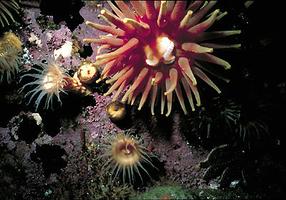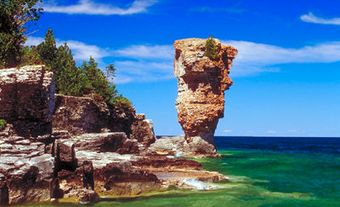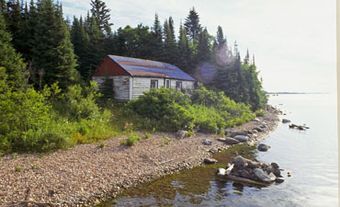
At the confluence of Fjord du Saguenay and the St Lawrence River estuary is Saguenay-St Lawrence Marine Park (established in 1998, 1138 km2). In 1990 the federal and Québec governments agreed to establish the marine park and that it is to be co-managed by the federal and provincial governments. The park consists of most of the riverbed of Fjord du Saguenay as well as the northern half of the St Lawrence estuary. Parc du Saguenay runs parallel on either side the park in the fjord.
Natural History
The fjord is geographically unique because it is Canada's most southerly and the majority of the others flow directly into oceans. Where the Saguenay River flows into the St Lawrence, there is an abundance of life, including over 300 freshwater and marine species. Oceanographic conditions found between Les Escoumins and Tadoussac favour the concentration of krill and plankton. Thus, seals, whales (minke, beluga, fin, blue) and seabirds are attracted to the area to feed and can be observed during the summer.
Human History
Where the 2 rivers meet, Aboriginal people have also met for at least 5500 years to exploit the marine resources. Later, Basque whalers hunted whales as far up the St Lawrence as the Saguenay. With the arrival of the fur trade came other European hunters exploiting the porpoise population. The St Lawrence River was, and continues to be, integral to the history and development of Canada; after 1840, commercial navigation began to plow the Saguenay.
Facilities
Two interpretation and observation centres overlook the estuary (Cap de Bon-Désir) and the confluence (Pointe-Noire), where one can observe the marine mammals and seabirds. The interpretation centre at Rivière Éternité is part of the Provincial Park. Cruise vessels, pleasure boating, scuba diving, sea kayaking and walking on the many trails, including one from the mouth of the Saguenay to Baie Éternité, allows one to explore the park.

 Share on Facebook
Share on Facebook Share on X
Share on X Share by Email
Share by Email Share on Google Classroom
Share on Google Classroom


